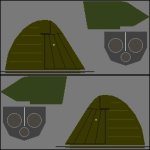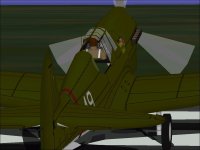A couple days ago, (Actually before my last two posts) I decided to try shifting the Tail pieces from the P-40E to produce a P-40K.
I did this by trying to project the lines that I already had for the existing Tail. The end result was very interesting because it produced a model that had a Fin / Rudder that was 12 feet 4.8 inches above the underside of the Main Wheels.
This is why I was looking for the drawings that specified that dimension
One of the drawings is an exact match. The other obviously is not.
Although I don't know the dimensions are absolutely correct, I believe this may be as good as I am going to get and probably good enough to build with.
- Ivan.
I did this by trying to project the lines that I already had for the existing Tail. The end result was very interesting because it produced a model that had a Fin / Rudder that was 12 feet 4.8 inches above the underside of the Main Wheels.
This is why I was looking for the drawings that specified that dimension
One of the drawings is an exact match. The other obviously is not.
Although I don't know the dimensions are absolutely correct, I believe this may be as good as I am going to get and probably good enough to build with.
- Ivan.

























